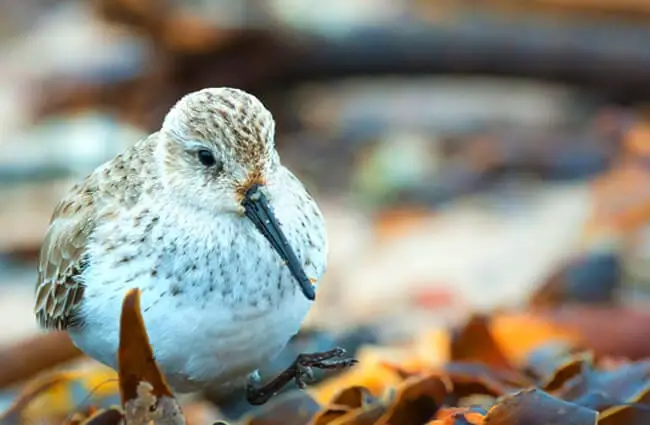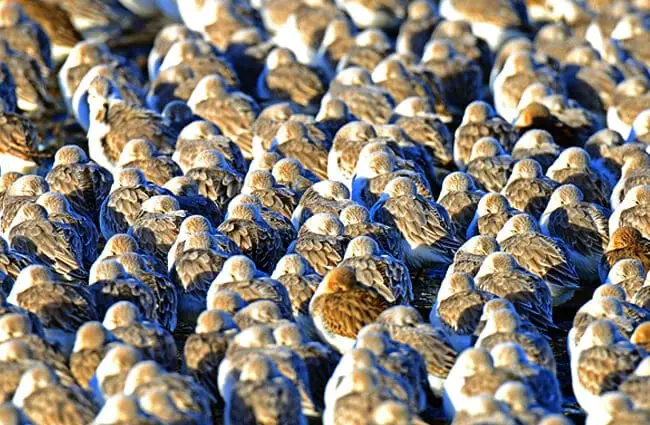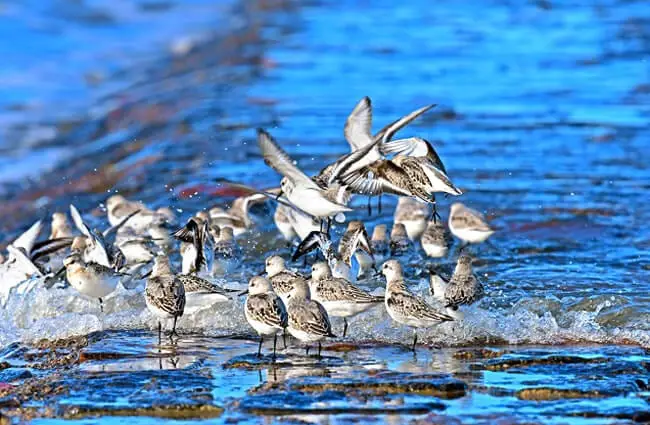Meet the Sanderling: A Coastal Specialist
The Sanderling is a small shorebird with a remarkable lifestyle, commonly seen along coastlines around the world. Characterized by its rapid, seemingly tireless running along the water’s edge, this bird is a master of foraging in dynamic intertidal zones. This guide delves into the world of the Sanderling, exploring its biology, behavior, ecology, and its interactions with both the natural world and humanity.

Basic Information: Identifying the Sanderling
Sanderlings belong to the sandpiper family, Scolopacidae, and are scientifically known as Calidris alba. These birds are typically 17 to 20 centimeters in length, with a wingspan ranging from 38 to 40 centimeters. Their plumage is a beautiful study in seasonal adaptation. In breeding season, they boast a rich reddish‑brown upperpart and a white underpart. During winter, their plumage turns pale gray, providing excellent camouflage against the sandy beaches they frequent. A distinguishing feature is their black bill and legs, which appear disproportionately long for their body size, perfectly adapted for probing in the sand.
Habitat and Distribution: A Global Traveler
Sanderlings are circumpolar birds, breeding in the high Arctic regions of North America, Europe, and Asia. From these breeding grounds, they undertake impressive long‑distance migrations, traveling south to wintering sites across North and South America, Africa, Asia, and Australia. They prefer sandy beaches, mudflats, and rocky shores, and they exhibit a strong preference for the intertidal zone, the area between high and low tide marks, which provides a rich feeding ground that is exposed with each receding tide.
Diet and Foraging Behavior: Masters of the Intertidal Zone
Sanderlings feed primarily on small invertebrates, including crustaceans, mollusks, insects, and marine worms. They employ a unique foraging technique. Rather than pecking or probing directly, they sprint along the beach in a rapid running motion, pausing briefly to probe the sand with their bill. This “run‑stop‑probe” behavior lets them efficiently scan a large area for concealed prey. Their long legs and bill are crucial for reaching prey buried deep within the sand. They are opportunistic feeders, adjusting their diet to the availability of prey.

Reproduction and Life Cycle: Raising Young in the Arctic
Sanderlings return to their Arctic breeding grounds in late spring or early summer, usually in May or June. They form monogamous pairs, and both parents participate in nest building and chick rearing. Nests are simple ground scrapes lined with vegetation. The female typically lays four eggs, which are incubated by both parents for about 22 to 24 days. Chicks are precocial and can leave the nest shortly after hatching, but they rely on parental care for several weeks. Both parents feed the chicks during the first weeks of life. Young Sanderlings reach sexual maturity within about one year.
Ecological Role and Interactions: A Vital Component of Coastal Ecosystems
Sanderlings help regulate populations of intertidal invertebrates by foraging on them. They also serve as a food source for larger predators such as raptors and gulls. Their foraging activity aerates the sand, improving its quality. Sanderlings often forage in flocks, creating a dynamic and visually striking element of the shoreline. These flocks provide protection against predators through increased vigilance.
Sanderling and Humans: Historical Significance and Current Concerns
Throughout history, Sanderlings have held cultural significance for coastal communities. Their predictable migrations and presence along shorelines have made them familiar and sometimes revered birds. However, they face a number of threats, including habitat loss, pollution, and climate change. Coastal development and rising sea levels are destroying valuable intertidal habitats. Pollution from oil spills and other sources can contaminate their food supply. Climate change is altering migration patterns and breeding conditions. Sanderlings are currently listed as Least Concern by the IUCN, but ongoing conservation efforts are crucial to ensure the long‑term survival of this remarkable species.

Advanced Insights for Aspiring Zoologists
Evolutionary History: The Calidris genus, to which the Sanderling belongs, likely originated in the late Miocene or early Pliocene epochs. Phylogenetic studies suggest a close relationship with other sandpiper species, particularly those adapted to intertidal foraging. The Sanderling’s specialized bill morphology and foraging behavior are likely adaptations to exploit the rich invertebrate resources of the intertidal zone.
Migration Patterns: Recent tracking studies using geolocators and satellite telemetry have revealed detailed information about Sanderling migration routes and stopover sites. These studies show that Sanderlings undertake remarkably long migrations, often covering thousands of kilometers. Understanding these migration patterns is crucial for identifying and protecting important stopover habitats.
Foraging Ecology: Detailed studies of Sanderling foraging behavior reveal that they exhibit complex prey‑selection strategies. They can detect prey buried deep within the sand using sensitive bill receptors. They also adjust their foraging behavior based on tidal conditions and prey availability.
Encountering a Sanderling: A Guide for Hikers
If you encounter a Sanderling while hiking along the coast, observe it from a distance. Avoid approaching it too closely, as this may disturb its foraging behavior. Do not attempt to feed it, as this can disrupt its natural diet. Appreciate its remarkable adaptations and its vital role in the coastal ecosystem. If you notice a sick or injured Sanderling, contact a local wildlife rehabilitation center.
Caring for Sanderlings in Captivity: A Zookeeper’s Guide
Caring for Sanderlings in captivity requires a specialized environment that replicates their natural habitat. Provide a large enclosure with a sandy substrate and a shallow water area. Offer a varied diet of small invertebrates, such as shrimp, crabs, and mealworms. Provide enrichment items, such as rocks and vegetation, to stimulate natural foraging behavior. Monitor their health closely and provide veterinary care as needed. Avoid overcrowding and ensure that they have adequate space to move and forage.

Fascinating Facts About the Sanderling
- Sanderlings can run at speeds of up to 10 miles per hour.
- They can survive for several days without drinking water, obtaining moisture from their food.
- Sanderling flocks often synchronize their running movements, creating a mesmerizing visual display.
- Their plumage changes dramatically between breeding and winter seasons, providing camouflage in different environments.
- They are one of the most widespread shorebird species in the world, found on coastlines across all continents except Antarctica.
Conclusion: A Coastal Treasure
The Sanderling is a remarkable bird, perfectly adapted to thrive in the dynamic intertidal zone. Its rapid running, specialized foraging behavior, and long‑distance migrations are a testament to the power of natural selection. By understanding its biology, ecology, and the threats it faces, we can work to ensure the long‑term survival of this coastal treasure.


![Red Angus Closeup of a beautiful Red Angus cowPhoto by: U.S. Department of Agriculture [pubic domain]https://creativecommons.org/licenses/by/2.0/](https://animals.net/wp-content/uploads/2020/03/Red-Angus-4-238x178.jpg)




![Red Angus Closeup of a beautiful Red Angus cowPhoto by: U.S. Department of Agriculture [pubic domain]https://creativecommons.org/licenses/by/2.0/](https://animals.net/wp-content/uploads/2020/03/Red-Angus-4-100x75.jpg)

